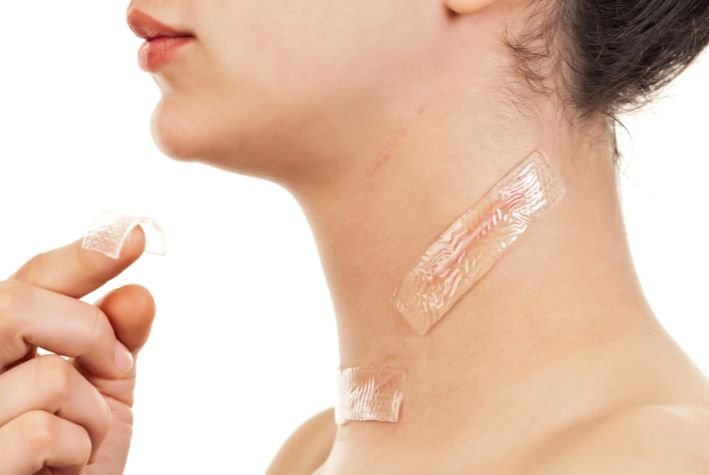Scars
Scars are formed in skin when it is injured. It forms a normal part of wound healing when the skin injury is deep enough (into the dermis). They can be due to burns, surgery, self harm and other types of injuries.
There are different types of scars including keloid and hypertrophic scars along with atrophic (sunken in).
Treatment to minimise scars
What are all of my options?
Depending on what type of scar you have will depend on your options for treatment. Having said this though - broadly your options include:
Silicone gels and sheets
Pressure garments and other dressings
Intralesional and topical steroid preparations
5-fluorouracil
Laser and light based treatments
what about hypertrophic scars
Hypertrophic scars are elevated scars above the skin surface. This elevation is due to abnormal and exaggerated wound healing. They are quite common, occurring in up to 40-70% of surgical patients and 90% of burns patients. They appear red, raised and can have loss of colour and be painful and itchy. Often this means that the skin is under tension and so it impairs normal skin or surrounding joint movement.
How can you treat hypertrophic scars?
Treatment of hypertrophic scars include silicone with intralesional triamcinolone injections to reduce the thickness of the scar. Vascular laser combined with fractionated CO2 laser works well too.
What is the aim of laser treatment for hypertrophic scars?
The aim of laser treatment, especially the carbon dioxide fractional laser, is to reduce the height and redness of the scar. Lasers are also used to improve the scar pliability and help with itching that occurs with these types of scars. Lasers do this, in part, by breaking up disorganised extracellular matrix proteins and helping with the creation of new collagen.
scar Laser options
There are many types of lasers used in the treatment of scars, but my favourite are the vascular laser combined with the fractionated ablative carbon dioxide laser. These 2 lasers can be used on the same day.
At Northern Sydney Dermatology & Laser, we use a Candela VBeam (595nm) laser - this is especially for the red components of the scar. Usually this treatment is performed every month. This laser has a dynamic cooling device that delivers a cooling mist when the laser pulse is emitted, so that it is well tolerated and more comfortable during the treatment. It feels like a small elastic band on the skin during treatment. A few treatments are generally needed.
The vascular laser can be combined on the same day with a CO2 ablative laser which is used at low densities and high joules to penetrate deeply in to a scar and help in collagen remodelling. Again, a few treatments are needed and these are spaced 4-6 weeks apart.
In darker skin tones, a fractionated non-ablative laser can be used and also radiofrequency. We have both of these lasers at Northern Sydney Dermatology & Laser.

